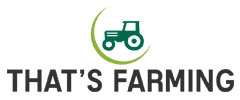 |
| Note the different sizes of her horns. |
“Fascinating Fact of the Day About Ireland”
will always be Ireland’s most famous drink, more of the black stuff is consumed
each year in Nigeria than it is back home in Ireland. In fact, the Brits are
the largest consumers of Guinness, followed by Nigerians, leaving Ireland in
third place!”
From this site with Ireland’s livestock stats.
Livestock Survey
December 2018
| Cattle | Pigs | Sheep | |
| 2017 | 6,673.6 | 1,616.4 | 3,981.8 |
| 2018 | 6,593.5 | 1,572.2 | 3,743.5 |
| % change | -1.2 | -2.7 | -6.0 |
 |
| Many females of certain breeds have horns. |
Without a doubt, our readers are well aware we have an infinity toward wildlife and domesticated animals. In our “old” lives we had plenty of daily interactions not only with our own dogs but also the neighborhood dogs. On a private road, there was no enforcement of leash laws and our dogs roamed freely visiting neighbors along the road.
Living on a lake in Minnesota also provided us with frequent wildlife sightings including heron, geese, eagles, wood ducks, loons and many other varieties of birds. It was truly a bird watcher’s paradise.
 |
| This short rock wall borders the holiday home’s garden. We saw something move to realized several cattle were very close to us. |
In addition, we could count on seeing coyotes and foxes, mostly in the winter when they could walk across the frozen lake looking for “little dog lunch.” Also, in the spring, on occasion, we’d see a moose swimming across the lake.
The photo ops were outstanding. At the time, neither of us could take a decent photo, although we had a digital camera. At the time, neither of us would know that we’d have loved to look back at photos of wildlife, let alone the photos of those we love.
 |
| I was a little too far for using flash when it was almost dark as I took this photo from the living room window. |
When a family event was underway someone always yelled out, “take a photo” and we’d all turn and look at one another trying to see if anyone “bit” on the concept. Seldom was the case. If only we had photos of those events. Sure we have a few hundred photos stored on a cloud, but nothing like we have now, thousands of photos each year from our everyday lives of world travel.
We didn’t start taking photos of our travels until we were a few months into it, realizing using our smartphones wouldn’t be satisfactory for our posts. Over the past almost seven years, we learned a little but never enough.
 |
| This cow was busy grazing in the side yard but picked up her head when we drove toward the main road from the driveway. |
From time to time when the lighting isn’t ideal, we struggle to get good shots. It could be us, it could be our cameras…most likely it’s us. Thus, we apologize for the lack of clarity in some of today’s photos taken when it was almost dark. The photo opp happened so quickly we had no time to change the settings on the camera.
Now, in the lush green of Ireland’s summer, we’re thrilled to be able to see barnyard animals and livestock. After all, 15 months in Marloth Park is hard to beat when at any given moment we had amazing animals standing at the edge of the veranda.
 |
| Mom and baby. |
A few nights ago we were reminded of Marloth Park when we saw movement outside our living room window. We jumped up simultaneously, each grabbing a camera, hoping for some good shots.
Alas, as late as it was, close to 2200 hours, 10:00 pm, we were pushing our luck. As the days are getting shorter since the summer solstice on June 21st, it’s still light here, at least to some degree, between the hours of 5:00 am and 2230 hours, 10:30 pm.
This morning I awoke at 4:30 am, still needing more sleep, realizing our sleeping problems most likely are a result of too much light in the bedroom with the thin draperies. Luckily by 6:00 am, I fell back to sleep for a few more hours.
 |
| This photo was taken in the evening before the sun fully set. |
Thus, when the cows were near the house, although it was still light, our photo taking was marginal at best. The remainder of the photos were taken during daylight hours albeit with a heavy cloud cover. Today, it started out sunny but now the dark clouds are rolling in from the sea. This is common for Ireland.
Regardless of the weather, we’ve thoroughly enjoyed the cattle, sheep, donkeys, horses and occasional pigs we’ve seen while driving on the narrow winding roads. It seems the cattle and the sheep are most prevalent which, as you can see above, the numbers are obvious.
Soon, when we depart for Amsterdam, it’s unlikely we’ll have many opportunities to take wildlife photos. We’ll be staying in the city for two nights, taking photos of a different kind of wildlife! It should be fun.
May your weekend be filled with many wonderful surprises!
Photo from one year ago today, July 20, 2018:
 |
| Hippos resting on a sandbar on the Sabie River. Note the number of oxpeckers on the hippos hides! For more Kruger photos please click here. |





































